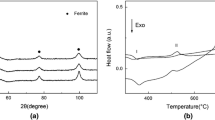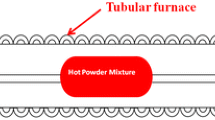Abstract
Studies of the effect of the extrusion and sintering regimes on the pore structure of steel 45N4D2M, made from partially alloyed iron powder, showed that the porosity of the powder products can be reduced to below 10% by pre-sintering the extruded products at 700–850°C to remove work-hardening that occurs during the first extrusion and then extruding the product again at 400–600 MPa to additionally compact it to a relative density of 0.90–0.93. Within the investigated density range (0.81–0.93), a decrease in porosity is accompanied by a monotonic increase in all of the mechanical properties of sintered steel 45N4D2M: a 1% reduction in porosity makes it possible to increase σu and σ0.2 by 30 MPa, increase σb by 65 MPa, increase δ by 0.1 %, increase KC by 2.3 J/cm, and increase hardness by 10 HB. It was established that, other conditions (chemical composition, the structure of the metallic matrix) being equal, the properties of the sintered steel are determined mainly by the final porosity and are independent of the parameters of the compaction operation in which they are obtained.
Similar content being viewed by others
Author information
Authors and Affiliations
Rights and permissions
About this article
Cite this article
Kalashnikova, O.Y., Gulyaev, I.A. & Dovgan', E.I. Feasibility of Reducing the Porosity of Steels Made from Partially Alloyed Iron Powder. Metallurgist 48, 31–37 (2004). https://doi.org/10.1023/B:MELL.0000027860.43551.6c
Issue Date:
DOI: https://doi.org/10.1023/B:MELL.0000027860.43551.6c




